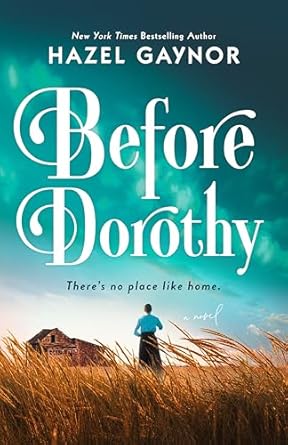Written with the riveting storytelling and moral seriousness of authors like Emma Donoghue, Adam Johnson, Ann Patchett, and Curtis Sittenfeld, Cartwheel is a suspenseful and haunting novel of an American foreign exchange student arrested for murder, and a father trying to hold his family together.
When Lily Hayes arrives in Buenos Aires for her semester abroad, she is enchanted by everything she encounters: the colorful buildings, the street food, the handsome, elusive man next door. Her studious roommate Katy is a bit of a bore, but Lily didn’t come to Argentina to hang out with other Americans.
Five weeks later, Katy is found brutally murdered in their shared home, and Lily is the prime suspect. But who is Lily Hayes? It depends on who’s asking. As the case takes shape—revealing deceptions, secrets, and suspicious DNA—Lily appears alternately sinister and guileless through the eyes of those around her: the media, her family, the man who loves her and the man who seeks her conviction. With mordant wit and keen emotional insight, Cartwheel offers a prismatic investigation of the ways we decide what to see—and to believe—in one another and ourselves.
Jennifer duBois’s debut novel, A Partial History of Lost Causes, was a finalist for the PEN/Hemingway Award for Debut Fiction and was honored by the National Book Foundation’s 5 Under 35 program. In Cartwheel, duBois delivers a novel of propulsive psychological suspense and rare moral nuance. Who is Lily Hayes? What happened to her roommate? No two readers will agree. Cartwheel will keep you guessing until the final page, and its questions about how much we really know about ourselves will linger well beyond.
Hardcover, 384 pages
Published
September 24th 2013
by Random House
(first published January 1st 2013)
ISBN 0812995864
(ISBN13: 9780812995862)
About the Author
from the author's website
Jennifer duBois was born in Northampton, Massachusetts in 1983. She earned a B.A. in political science and philosophy from Tufts University and an M.F.A. in fiction from the Iowa Writers’ Workshop, where she was a Teaching-Writing Fellow. After completing a Stegner Fellowship in fiction, Jennifer served as the Nancy Packer Lecturer in Continuing Studies at Stanford University. Her writing has appeared or is forthcoming in Playboy, The Wall Street Journal, The Missouri Review, The Kenyon Review, The Florida Review, Narrative, ZYZZYVA, and FiveChapters, and has been anthologized in Imaginary Oklahoma, Esquire/Byliner’s "New Voices" collection, and Narrative 4’s "How To Be A Man" project. Her short story “Wolf” was named a Notable Story in Best American Short Stories 2012, and the first chapter of A Partial History of Lost Causes was selected as a Top Five Story of 2011-2012 by Narrative. Honored by the National Book Foundation’s 5 Under 35 program, A Partial History of Lost Causes was the winner of the Northern California Book Award for Fiction and the California Book Award for First Fiction, and was a finalist for the PEN/Hemingway Prize for Debut Fiction. She currently teaches in the MFA program at Texas State University-San Marcos.
Check out the author's website
Like the author on Facebook
Follow the author on Twitter
My Thoughts
FebruaryLily is a student in Argentina for a semester. She is enamored with the culture, but feels unwelcome and uncomfortable in her host home, and her roommate Katy is a bit of a drag. She becomes friendly with the odd, isolated young neighbor next door.
Andrew's plane landed at EZE, as promised, at seven a.m. local time. Outside the window, the sun was a hideous orb, bleeding orange light through wavering heat.
Sebastian, a wealthy diplomat's son, lost his parents when he was a teenager and now lives the life of a hermit, rarely leaving his neglected, dark and depressing mansion of sorts.
Several weeks later, Katy is found brutally murdered, and Lily is the prime suspect arrested in her murder.
The author clarifies that, while inspired by Amanda Knox, this story is entirely fictional.
Although the themes of this book were loosely inspired by the story of Amanda Knox, this is entirely a work of fiction. None of the characters are real. None of the events ever happened. Nothing in the book should be read as a factual statement about real life events or people (p. 6)This book alternates viewpoints, so one minute Lily seems to be a self-absorbed and thoughtless brat, and the next when you see it through her own eyes you think maybe she is those things, but also just a little misunderstood.
I didn’t understand some of the things the author did to try and relay who Lily was-- self-serving, self-absorbed, shallow, socially awkward. For example, in the book the prosecution uses Lily’s pictures against her, using them to depict a woman who is callous and lacks humility.
On the camera was a picture of a woman with a blood-colored lesion on her face, clearly taken on the sly. There was a picture of a tiny pantsless boy. There was a picture of Lily Hayes herself, giving an exaggerated thumbs-up as she points to her bug bites. Here, Eduardo saw, was a person without humility. And Eduardo believed that humility, more than anything, was the basis for morality. (p. 55)I just didn't get this conclusion. I don’t think her pictures depict someone lacking humility, but rather someone fascinated with the world and the human condition.
Sebastian is a very odd character that I just couldn't understand. Whether I was seeing him through his own eyes or those of someone else, I was totally confused over what is motivation was for his bizarre behavior.
He was his parents’ son, after all. If there was anything he could endure, it was solitude. If there was anything he could endure, it was abandonment. If there was anything he could endure, it was everything. (p. 224)
This was why he was so often insufferable, he knew. The real answers were unutterable and strange and upsetting, so he had no choice but to give fake ones.(p. 75)
If they were handing out prison terms for murky moral impulses, Sebastian figured, he might as well go ahead and turn himself in. (p.235)Katy is a rather studious and serious girl. She's thoughtful and self-aware. She's something of the antithesis of Lily. Her death is shocking to everyone. While Lily might go to nightclubs and worked at a local restaurant, Katy was quiet and seemed to always have her nose in a book. She is the last person you would expect to find murdered.
Lily calls her divorced parents back in the states, and first her father Andrew travels with her sister Anna to be with her, and later they are joined by her mother Maureen.
Andrew is really clueless when it comes to his daughters. He always seems to feel inadequate as a father, and views Maureen as the perfect mother. He seems to view daughter Lily as his little golden child, and there is sort of an uncomfortable distance with daughter Anna. Lily is quite obviously his favorite, and you find later on that he really doesn't seem to really know either of his daughters.
Anna, on the other hand, seems to have a better handle on who Lily really is. Anna is the younger sister, but the dynamic with Lily seems to be more as the big sister. Anna is the disciplined athlete, more serious and focused and responsible, where Lily is irresponsible, flighty and unaware.
This book unfurls like a Dateline murder mystery, piece by piece, first one view then another. You lean this way with one person’s view, and then another person’s view of the exact same event has you feeling totally different about it all. There really is a Gone Girl aspect to this book.
This story is constantly getting you to look at the same thing from different angles. “What if I told you this guy had robbed a bank at gunpoint? Would you think he’s a bad guy? Now what if I told you that guy volunteers every weekend at an old folk’s home, he’d recently lost his job, was about to lose his home, his wife died of cancer last year and he’s raising 3 kids on his own, and one of them is horribly ill and needs an expensive medical procedure to make him feel better, and the family has no medical insurance. Now is he a bad guy?”
My final word: This was my first Jennifer duBois novel, and I would definitely read her again. Everything in this story is interwoven. One thing mentioned at one point will be addressed again later from a different perspective, and you think “Oh” in wonder as you realize your initial assessment is all wrong. It had great suspense. With only 70 pages left in the story, I still wasn’t sure “whodunit”. It definitely has a Gone Girl feel to it. However, unlike in Gone Girl, where the characters were so unlikable I just wanted to finish it to get away from them, with this novel, I wanted to reach the end to find out what happened! Peculiar, uncustomary and provocative, I've gotta recommend this one!
Buy Now:
Barnes and Noble
Amazon
IndieBound
Cover: B-
Writing Style: B+
Characters: B+
Storyline/Plot: A-
Interest/Uniqueness: A
My Rating: B+
Disclosure:
I received a copy of this book to review through the Netgalley and the publisher, in exchange for my honest opinion. I was not financially compensated in any way, and the opinions expressed are my own and based on my observations while reading this novel. The ebook that I received was an uncorrected proof, and quotes could differ from the final release.




















No comments:
Post a Comment